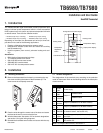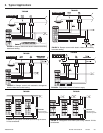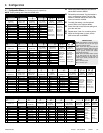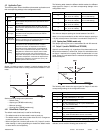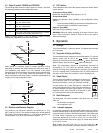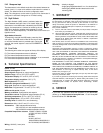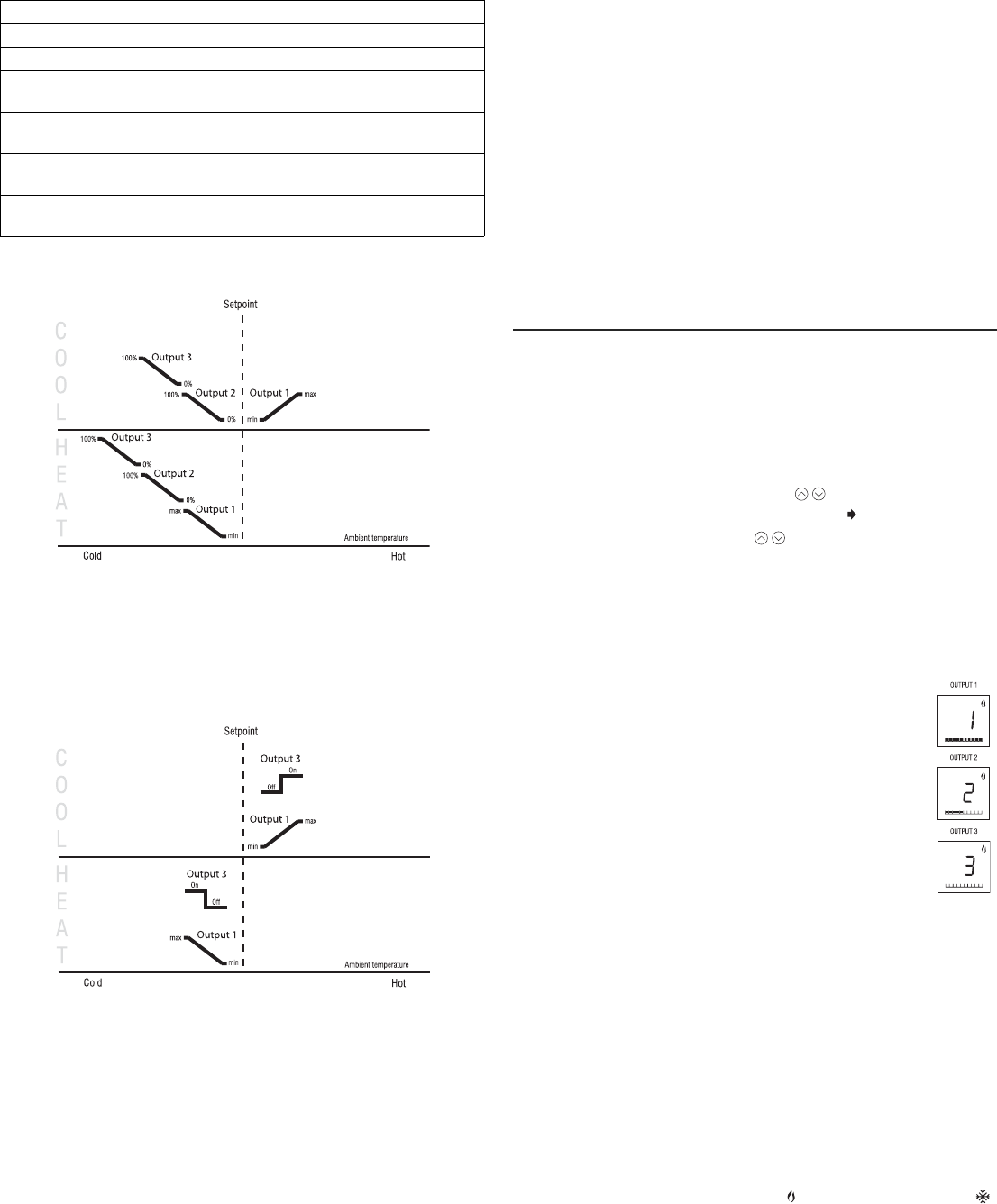
TB6980/TB7980 62-0238 400-150-005-B 3/23/06 5/6
4.5 Output 3 (models TB6980B and TB7980B)
The following table shows the output types for Output 3 and their
corresponding settings in the configuration menu.
When any setting between 1 and 4 is selected, Output 3 controls
heating only, regardless of the thermostat’s mode.
When setting 5 is selected, Output 3 controls heating or cooling
depending on whether the default mode has been set to heat or
cool respectively (see section 4.3.1). For example, if the default
mode has been set to heat mode, the contact remains opened when
the thermostat is in cool mode. When the thermostat is in heat
mode, the contact closes when Output 1 reaches a percentage of its
capacity, set via the configuration menu.
4.6 Minimum and Maximum Setpoints
The minimum and maximum setpoints are factory-set at 10°C
(50°F) and 35°C (95°F). The maximum setpoint can be set between
35°C (95°F) and (minimum setpoint + 1). The minimum setpoint can
be set between 10°C (50°F) and (maximum setpoint - 1).
4.7 DIP Switches
Three switches at the back of the control module are used to select
various options.
Temperature Display (SW1)
Selects the desired temperature display (°C or °F).
Access Mode (SW2)
Selects the operation mode (NORM) or the configuration mode
(MENU).
• Place the switch to MENU to access the configuration menu.
• Place the switch to NORM for normal display.
Output 2 Type (SW6)
Sets Output 2 type (Analog or Triac).
WARNING: Place the switch according to the type of device (Ana-
log or Triac) connected to Output 2. Failure to do so can result in
thermostat damage.
5. Operation
5.1 Backlight
To turn the backlight on, press any button. The display will illuminate
for 12 seconds.
5.2 Temperature Display and Setting
The thermostat usually displays the actual temperature. To view the
setpoint, press once on one of the buttons. The setpoint
appears for 5 seconds and is indicated by the display. During the
setpoint display, press one of the buttons to change it.
Note: The temperature setpoint is automatically increased or
decreased by 1°C (2°F) when the controller switches to heating
mode or to cooling mode respectively. For example, if the setpoint is
at 25°C in heating mode, it will become 26°C in cooling mode and
will return to 25°C when the controller is back in heating mode.
5.3 Output Display
The bar graph represents the voltage for an analog out-
put or the duty cycle for a triac output. The bar graph
usually shows Output 1 power (% of damper opening).
To view Output 2 or 3, press Override for 2 seconds to
enter the diagnostic mode. Press Override momentarily
to switch between the three output graphs. To exit the
diagnostic mode, press Override for 2 seconds or wait
for 1 minute for the mode to exit automatically.
5.4 Mode Changeover
The thermostat can switch between heat mode and cool mode
either via:
• the automatic changeover
• the changeover input
5.4.1 Automatic changeover
In automatic changeover, the thermostat detects when the system
switches between heat mode and cool mode by comparing the air
supply temperature with the ambient temperature. If the thermostat
is in heat mode, it switches to cool mode when the air supply is
cooler than ambient by 5°C (9°F) or more. If it is in cool mode, it
switches to heat mode when the air supply is warmer than ambient
by 5°C (9°F) or more.
Note: Neither the heat mode icon ( ) nor cool mode icon ( )
appears when the thermostat is placed in automatic changeover.
Menu setting Description
0 Not used
1 24 VAC pulsed (triac) / 1 sec. cycle
2
24 VAC pulsed (triac) / 10 min. cycle / direct action
(e.g., N.C. thermal valve)
3
24 VAC pulsed (triac) / 10 min. cycle / reverse action
(e.g., N.O. thermal valve)
4
24 VAC pulsed (triac) / 15 min. cycle (e.g., mechanical
relay such as R841)
5
N.O. contact (The contact closes when Output 1 reaches
or exceeds set percentage. See section 4.1.)



